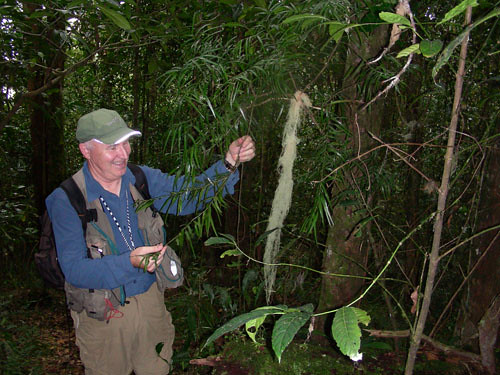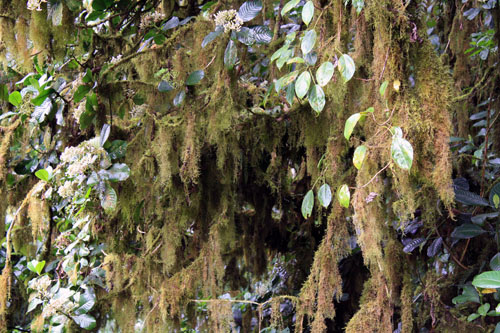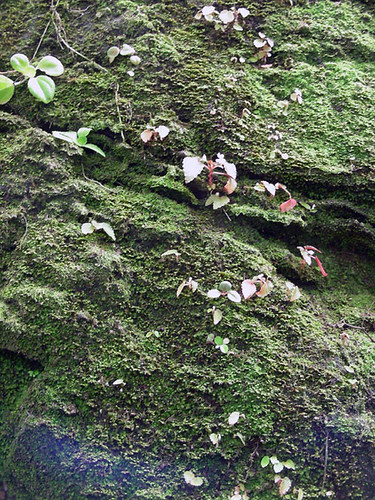This month I had hoped to describe part of our island educational project but things have been too busy here at the Academy; our Fall calendars are always full as it is the beginning of the academic year in the US. We have also hit some snags on our planned São Tomé- Príncipe biodiversity posters. We have the funding (thanks to donors to STeP UP) and the imagery from our expeditions; in fact we have everything except a designer. In the March blog, I included two of the mockups which were among those we took to the islands; everyone we showed them to liked them very much. It turns out though, that producing 200 high resolution posters of large size is not an easy undertaking, but we are working on it. Below is one of my favorites:

"Only In Sao Tome!!" D. Lin phot - GGI
There is much to relate on many fronts including news of the millipedes which are currently with an expert in Belgium, the identity of the Príncipe shrew, Lisette’s work on cobra jita, etc., all which I must write about later.
If you follow this account, you have already met Jim Shevock, one of the foremost bryophyte workers anywhere, and you will recall that during GG IV, he made a huge collection of liverworts, hornworts and mosses.

[Jim Shevock with Afrocarpus mannii, Morro Provaz. T. Daniel phot - GG IV
Jim’s island collection represents an enormous amount of work and will take a long time to fully analyze, but here is a progress report from him:
“Of the 700 bryophyte collections made during GGIV, nearly 275 of them represent liverwort and hornwort specimens. The specimens obtained from these two taxonomic groups have now been named to species by two world experts residing in Dresden and Budapest who specialize in African liverworts. The results are very impressive. Prior to GGIV, the published liverwort and hornwort checklist contained 85 species for São Tomé and 33 species for Príncipe (20 species are shared between the two islands). We have now added 26 liverworts as “new” for São Tomé and 19 species as “new” for Príncipe.

Orthostichella sp. (hanging). Lagoa Amelia. J. Shevock phot - GG IV.
The next phase is to complete the identification process for the mosses collected during GGIV. We anticipate the data on the mosses will be similarly impressive. The currently published moss checklist for São Tomé contains 76 species and only 14 mosses are reported in the literature for Príncipe. We anticipate the moss species list to expand markedly. We already have a moss family to report as new not only to the Gulf of Guinea but to West Africa (the Symphyodontaceae); other African records are known only from Malawi, Mozambique, Madagascar and Reunion Id. We have at least one species of moss new to science , and there will probably be more. All of the material obtained within the moss families Fissidentaceae and Neckeraceae are now identified to species, and in both cases, new taxa are documented for the country and from both islands. Some species will also be reported for the first time as occurring within West Africa. Based on the data obtained so far, the actual bryoflora of São Tomé and Príncipe is much richer than initially projected. Conducting these expeditions is but the first step toward the discovery of the biota of São Tomé and Príncipe.

Moss Fissidens ovatus and Begonia annobonensis, SW Príncipe. RCD phot - GG IV.
I posted a similar photo in the March blog when we thought the tiny flowering plant above might be an undescribed species of Begonia; we subsequently learned that this species is already known to science, but it is still possible that this southwestern Príncipe population may represent the smallest Begonia plant in the world. And, now we know that the rest of the rock is covered with the widespread tropical moss species, Fissidens ovatus.
The parting shot:

Santa Catarina buddies. Weckerphoto - GG III.
PARTNERS
We gratefully acknowledge the support of the G. Lindsay Field Research Fund, Hagey Research Venture Fund of the California Academy of Sciences, the Société de Conservation et Développement (SCD) and Africa’s Eden for logistics, ground transportation and lodging, STePUP of Sao Tome http://www.stepup.st/, Arlindo de Ceita Carvalho, Director General, and Victor Bomfim, Salvador Sousa Pontes and Danilo Barbero of the Ministry of Environment, Republic of São Tomé and Príncipe for permission to export specimens for study, the continued support of Bastien Loloum of Zuntabawe and Faustino Oliviera, Curator of the Herbarium at Bom Sucesso. Special thanks for the generosity of private individuals, George G. Breed, Gerry F. Ohrstrom, Timothy M. Muller, Mrs. W. H. V. Brooke, Mr. and Mrs. Michael Murakami, Hon. Richard C. Livermore, Prof. & Mrs. Evan C. Evans III, Mr. and Mrs. Robert M. Taylor and Velma and Michael Schnoll for helping make these expeditions possible. Our expeditions can be supported by donations to “California Academy of Sciences Gulf of Guinea Fund”.